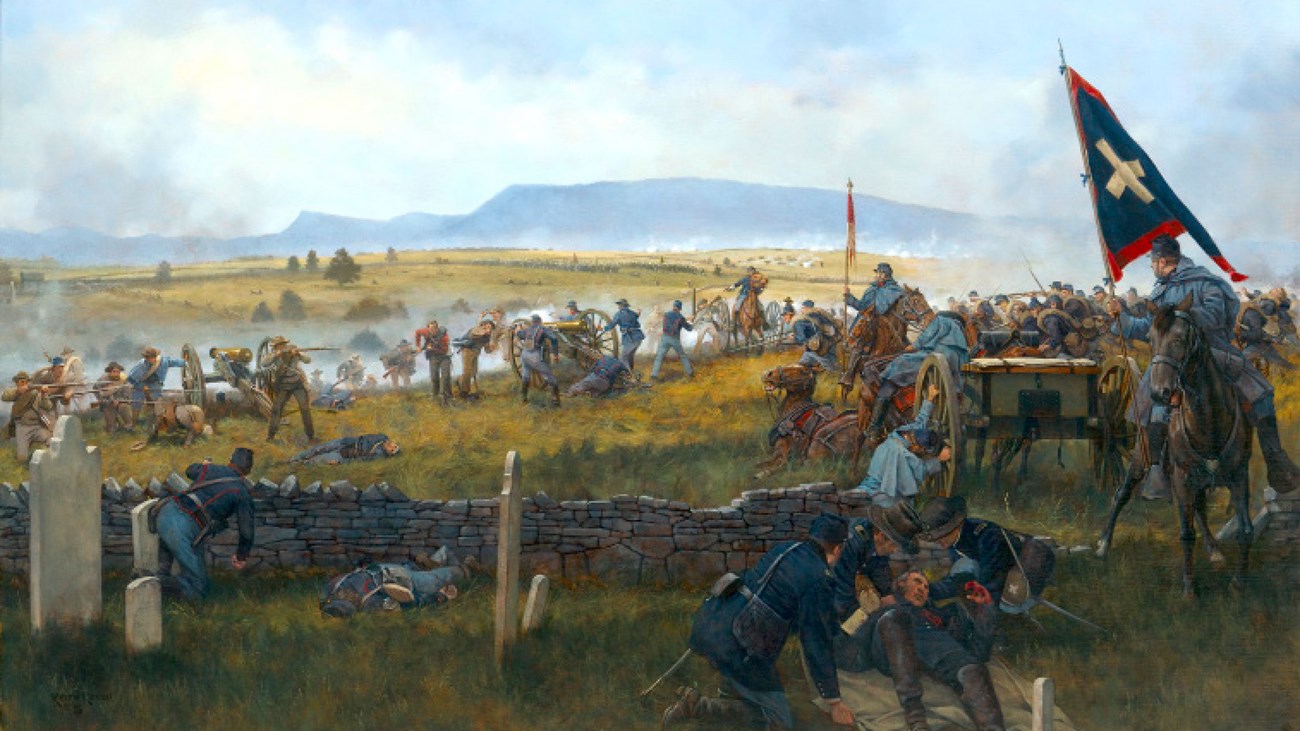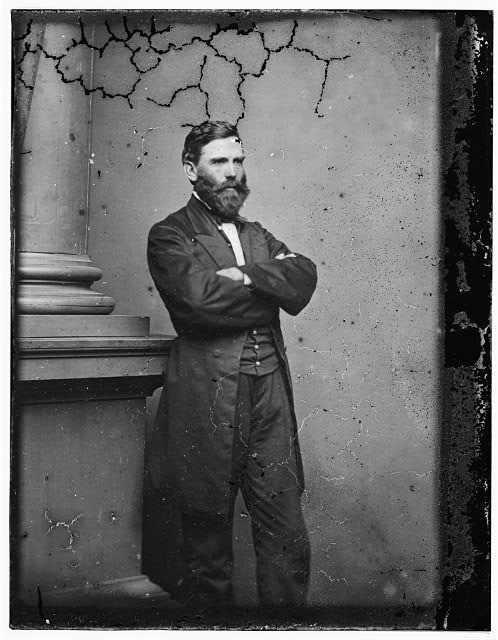Part of a series of articles titled A Victory Turned From Disaster.
Previous: A Rich Prize
Next: The Fatal Halt
Article

NPS
8:00 to 9:30 a.m.—The Middletown Cemetery, on a knoll west of the village, was the only point where Union officers believed they could establish a strong position and attempt to slow the Confederate advance. They hoped to halt the momentum that had propelled the Southern troops since the beginning of their surprise attack. From this high ground General George Getty’s division, approximately 2,500 strong, repulsed two Confederate assaults. Frustrated, General Jubal Early massed nearly 30 cannon near the Heater House and along Valley Pike (ahead of you and to the left).
The 30-minute cannonade, along with a third Confederate attack that threatened to turn the Union right, finally forced Getty to order a withdrawal.

Library of Congress
“Don’t run until the Vermonters do!”
—Lt. Col. Winsor, 77th New York
Overlooking the town of Middletown to the east and Belle Grove to the south, Mount Carmel Cemetery is located on a ridge that rises above the banks of Meadow Brook and provides a commanding view. Before the Civil War, the community of Middletown buried their dead in this cemetery above the town. As the Battle of Cedar Creek raged, this small graveyard became the scene of a desperate struggle to save an army from annihilation.
As the Battle of Cedar Creek raged, one Union division of the 6th Corps remained untouched. Brig. Gen. George Washington Getty’s division was the Union army’s last chance to stall the attack. Escaping the Confederate onslaught during the predawn assaults, Getty’s command was ready for a fight. Around 8:00 a.m., Getty witnessed Lt. Gen. Jubal Early’s victorious Confederates advancing across the fields surrounding Belle Grove toward his position. Determined to make a stand, Getty moved his men toward the high ground provided by the town’s cemetery. Getty hoped that a concentrated stand here would encourage stragglers from the 6th, 19th, and 8th Corps to rejoin the fight.
Early’s first attempt to break Getty’s line was spearheaded by Gen. John Pegram’s division. The morning’s fog was just starting to dissipate above the Valley floor. A Union officer ordered his men to, “hold their fire until they could see the enemy and know what they were firing at.” Pegram’s men appeared and were met by a withering volley and were repulsed. Determined to push Getty north of town, the next Confederate attack was led by Gen. Bryan Grimes. Grimes’ North Carolinians attacked the center of Getty’s line, straight into the teeth of the Vermonters. Part of Grimes’ Tarheels focused their attack on Union artillery supporting the Vermonters. Lt. Col. Winsor of the 77th New York commanded part of Getty’s left. When his line began to break, he looked toward the Vermonters and famously proclaimed, “Don’t run until the Vermonters do!” Getty’s line held off the second assault and remained in command of the hill.
Frustrated, Early amassed all his artillery of nearly 30 cannons. For 30 minutes he bombarded the hill with everything at his disposal. Union soldiers attempted to protect themselves any way they could. During the bombardment, Gen. Daniel D. Bidwell was struck in the shoulder. This wound proved mortal, and he died later that evening. When the smoke cleared, the Confederate offensive resumed. For the third time, Southern infantry approached Getty’s line at Cemetery Hill. Confederate infantry under Gen. Gabriel Wharton and Gen. Joseph Kershaw led the attack. This assault got closer to the Union line than the previous two attempts, including hand to hand combat for the Union cannon. An artilleryman recalled, “It was now man to man, hand to hand, with bayonet and musket butt on their side and revolvers, rammer heads and handspikes on ours.”
Despite his troops’ stiff resistance, Getty realized his position had been compromised and ordered a withdrawal. By 9:30, Getty’s men were en route northwest of Middletown to rejoin the broken Army of the Shenandoah. Early’s Confederates proudly marched through the streets of Middletown by 10:00. Getty’s 90-minute stand at Cemetery Hill was the most concerted Union effort to stop the triumphant Confederates. However, it proved to be not enough. A Union soldier remembered, “At this time the battle seemed lost, and all the maneuvering in the Valley for the last two months thrown away.”
Part of a series of articles titled A Victory Turned From Disaster.
Previous: A Rich Prize
Next: The Fatal Halt
Last updated: December 20, 2021